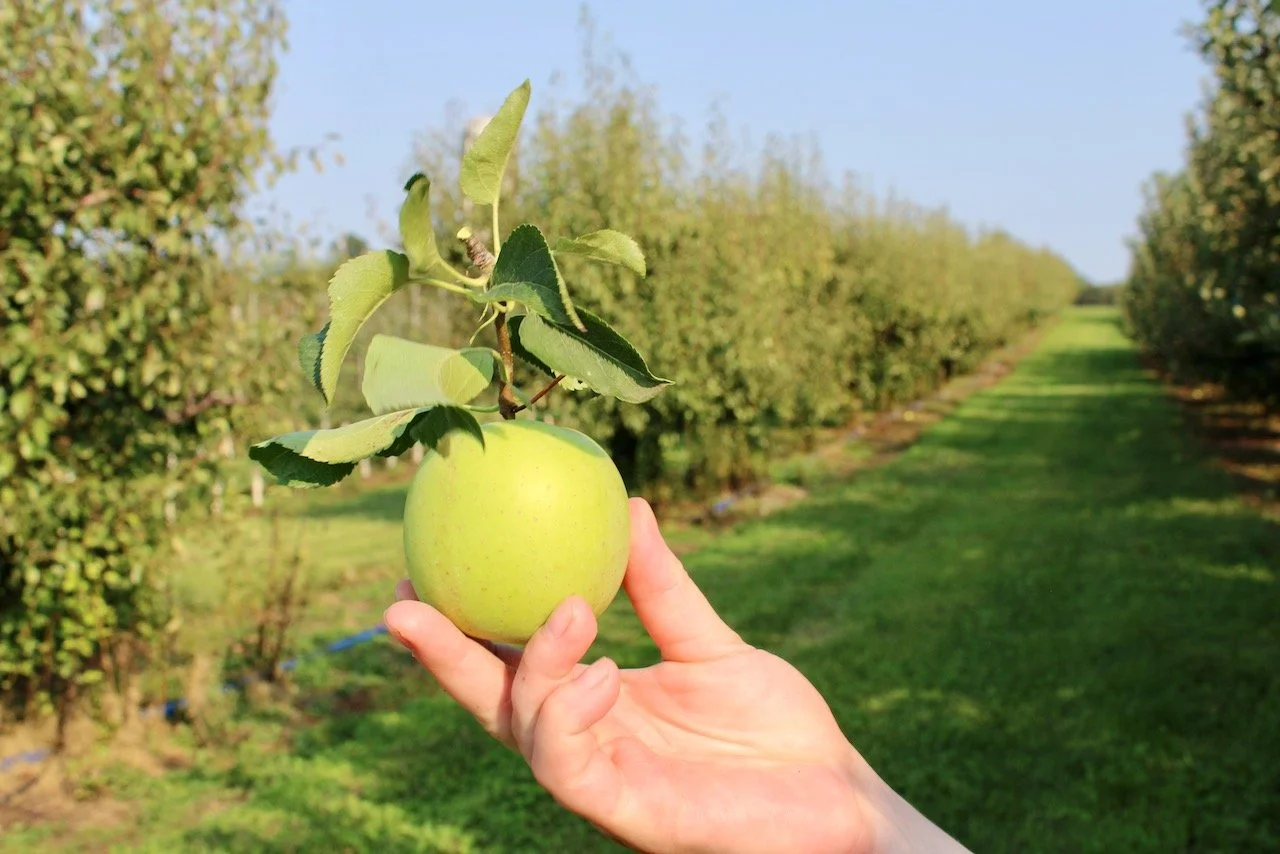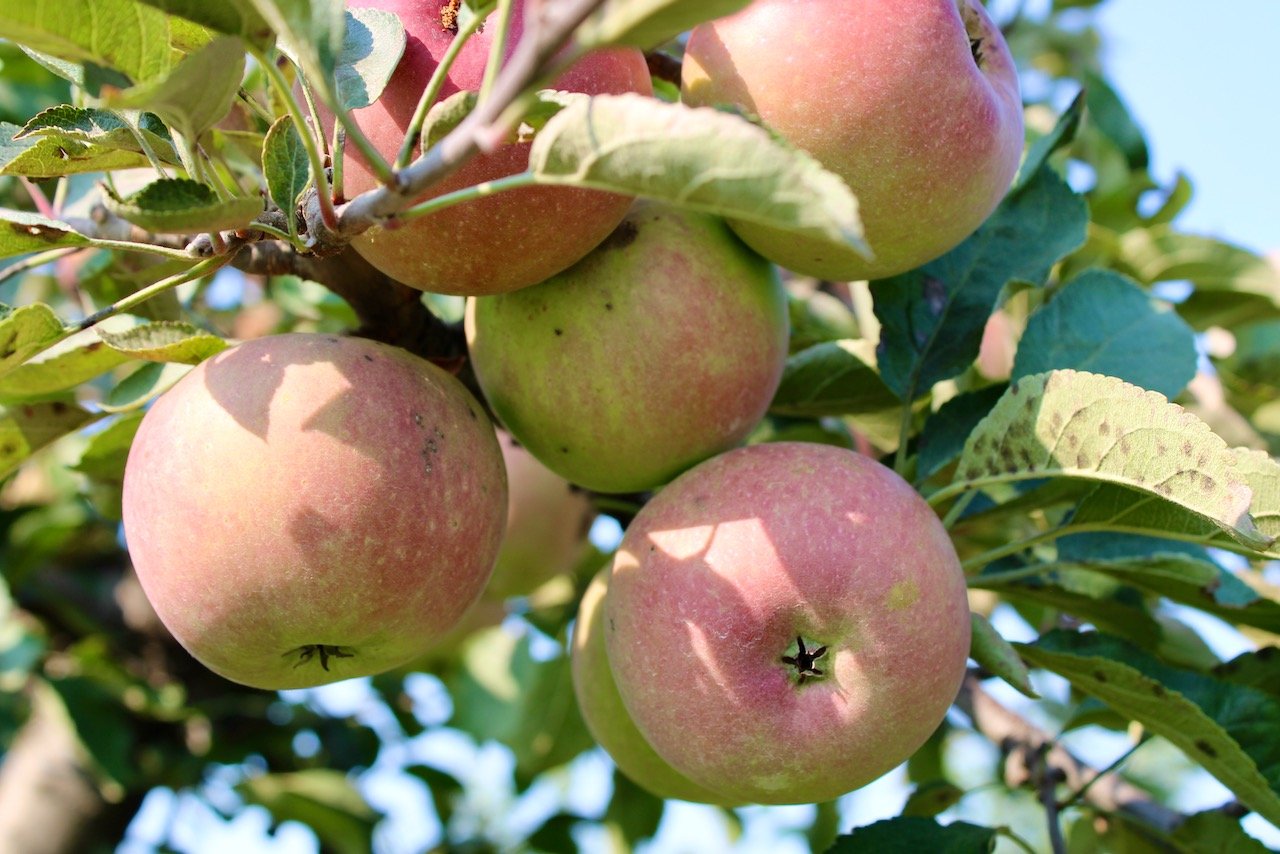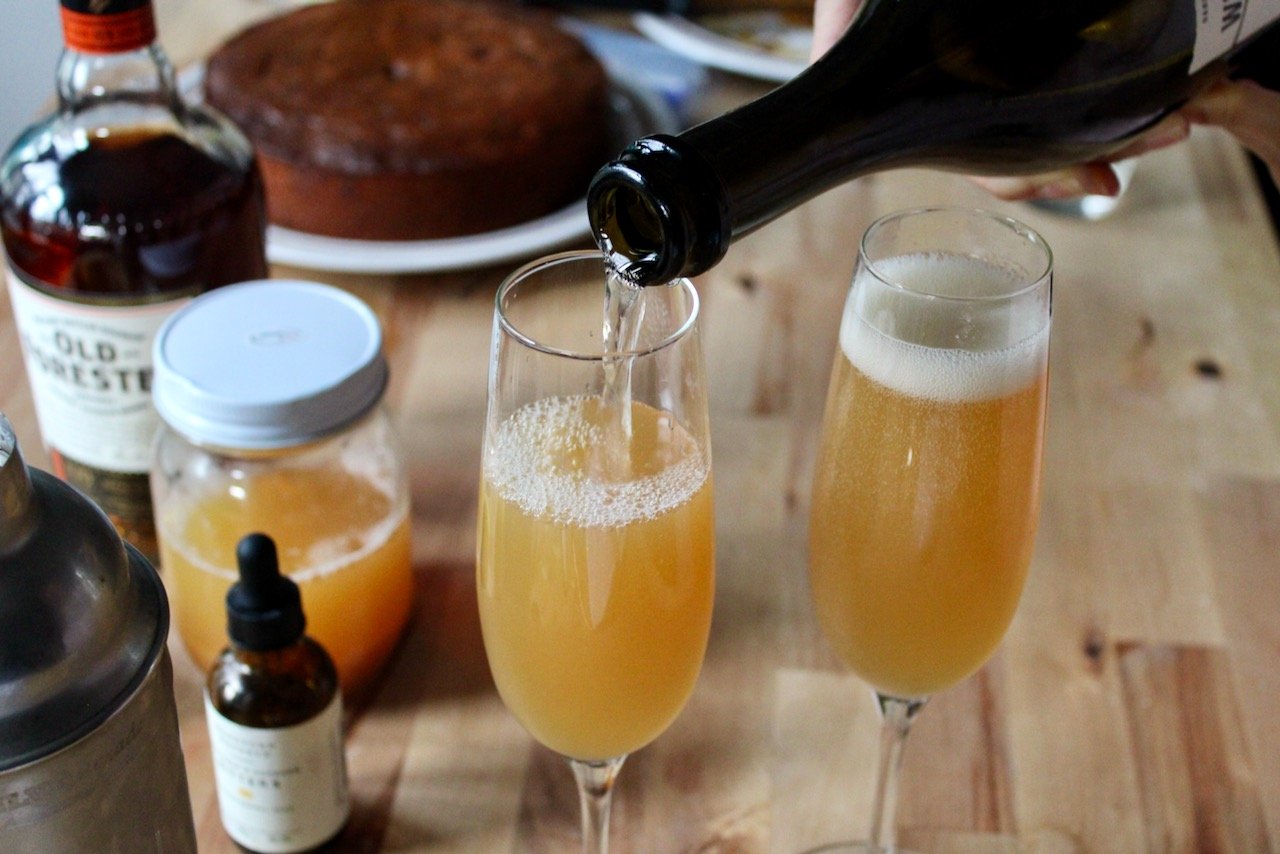Autumn Windfall: Apples in Kentucky
by Donna Hecker with photography by Talitha Schroeder
Apple season — not the apples of summer best left for sauce pots and jelly jars but the apples that fall in September and October, when the sun is sliding south — is the time for harvest mischief. It is the time of last temptation before the cold and darkness, and the growers are the agents of temptation.
Frank Browning, author of Apples: The Story of the Fruit of Temptation.
Evan’s Orchard. Photo by Talitha Schroeder
Apple season is such a wonderful time of year. We get into all kinds of harvest mischief making apple butter, cooking cider down into gastrique for a warm salad of kabocha squash and Nancy Newsom’s country ham, offering up an empty bourbon barrel to be filled with hard cider.
When Frank Browning’s book was published in 1998, he was busy working the family orchard in Fleming County with his brother, and making cider. Ten years later the Brownings donated their orchard to Morehead State University with the purpose of preserving antique varieties and providing resources for cideries and growers. Today farm manager Mike Dement says his top goals are to honor the Brownings’ legacy, share agricultural history, and deepen the school’s community bonds by re-establishing the annual Browning Orchard Festival.
After a disastrous late frost in 2020 disrupted the festival, Mike and his colleague Randy Webster are working hard to restore damaged trees and plant new ones. Having lost their student labor for several months during Covid, they hope to use 2022 as a regeneration year. To that end, they’ve planted a five acre parcel with rare cultivars like Razer Russet, originally found in Eastern Kentucky by Gene Razer. A six-foot tall, high tensile electric fence now protects the precious trees from roaming bears and deer.
Places like the Browning Orchard are a great resource for Tim and Greta Wright, who own Wise Bird Cider in Lexington. Tim is on a mission to source as much local fruit as possible for his ciders — even foraging in downtown’s old neighborhoods — and he travels across Kentucky looking for the weird and wonderful varieties that make the tastiest hard cider.
As soon as we emptied our Ouita’s First Edition Old Forester bourbon barrel last March, Tim and Greta refilled it with their Short Stories #3, made from a blend of late harvest and heirloom apples, including Dabinett, Harrison, Manchurian Crab, and Albemarle Pippin. After a six month nap in the barrel, it’s now available on tap at The Thirsty Fox where we’ve been savoring its deep apple essence, burnished with oak and warm spices.
Wise Bird also bottles Commonwealth Gold Cider, made with Gold Rush apples from Evans Orchard in Georgetown. At Holly Hill Inn we serve it in a twist on the classic Seelbach cocktail, created by our ops director/goddess of libations Leslee Macpherson. The cider’s sweet/tart apple flavors are a great stand-in for the traditional champagne and the cocktail is a deliciously seasonal addition to autumn celebrations.
When Ouita collaborated with Friends Drift Inn Foods to make apple butter, she called Trudie Reed of Reed Valley Orchard for advice on which varieties to get. Trudie suggested McIntosh, Cortland, Jonathan, Liberty and Jonagold.
Each was picked for a reason: Jonagold for flavor, texture and natural sweetness, McIntosh and Cortland for their aromatics. According to Trudie, either of the latter two are “a must for apple butter. If you wave them in front of your nose, you can smell them. You don’t need to have both but need one or the other. That to us is the primary taste that’s inside that apple butter.”
She continues, “The Jonathan has a little bit more tartness and sometimes you can get a little more color. The Liberty is your zing and your zap. Some people add lemon juice but I say no, don’t add anything but apples.”
Consequently, our farmer-connector David Wagoner ferried 34 bushels of apples and 24 gallons of fresh cider from Trudie and Dana’s orchard in Paris, Ky. to the Friends Drift Inn processing facility in Whitesburg, to be transformed into 1100 pints of apple butter under Chef Ouita’s label.
As with Trudie, if you ask any orchardman or -woman what kind of apple to get, you’ll be answered with a question. What are you going to do with it? Picture an apple pie chart: you’ll see slices for applesauce or apple butter, for eating, for baking, for frying, for drying, for cider.
Here’s a brief rundown of apples you’re likely to find at our local orchards and how best to use them:
At Holly Hill Inn, we like to buy Lodi apples from Ayres Family Orchard around the Fourth of July and make tart green applesauce to serve at Sunday brunch with Stone Cross Farm’s breakfast sausage. We’ll follow June apples with July blackberries and peaches, then August plums, circling back to apples in September and October.
Larry Ayres and his wife Sherry started Ayres Family Orchard from scratch in the early 1970s and, like other orchardists, wanted a variety of fresh fruit. We pickle Ayres Orchard plums and peaches, or turn them into chutneys and conserves; it’s not unusual to open a cabinet at the restaurant and discover a hidden trove of filled Mason jars.
As a student at the University of Kentucky, Larry couldn’t decide between microbiology or horticulture. Microbiology won out and Larry went to work at the state crime lab. But he never lost his love of plants. “It’s just always fascinated me, learning how nature works together and (how) everything needs to be synchronized and harmonized. You need to think about systems and plants and animals and birds and bees and the fruit — how everything grows together and how it’s all interdependent.”
Larry’s retired now and son Lewis has taken over. But it’s still Ayres Family Orchard. Larry says “the family’s always pitched in. The grandkids, too. They love the farm and being part of it. That’s what I wanted in the beginning, something we could all take pride in and enjoy” before adding, “but it’s a lot of work, too.
As children we learned about Johnny Appleseed, and it’s romantic to think of all the apple trees that once grew from seed in the American heartland. But since the 1700s, most apples have been produced through artifice, by grafting cultivar-bearing branches onto carefully selected rootstock. It’s a very deliberate process that requires decisions about the variety of apple desired, the height and size of the grown tree, how and where the trees will grow, and so on.
The very definition of rootstock is “a primary life form from which offshoots can grow.” To us, that is what Kentucky’s family orchards have long provided — foundation, support and shelter all in one. We’re blessed with so many that there’s sure to be one nearby and open for visitors. There’s no better way to spend an autumn afternoon in Kentucky than wandering through rows of apple trees under a cornflower sky, basket in hand, reaching for Eden’s fruit.
Here are just a few orchards in the Central Kentucky area:
Evans Orchard and Cider Mill, Georgetown
For a full listing, visit the Kentucky Department of Agriculture business directory at www.kyagr.com
© 2021, Holly Hill Inn/Ilex Summit, LLC and its affiliates, All Rights Reserved
Related Content
Cider Seelbach
This fall themed drink is twice-removed from the classic champagne cocktail by way of the Seelbach. With local ciders (both alcoholic and non) it’s perfect for any autumnal get together!












